Google Cardboard- #10
By, Tatianna Competello
For our blog post this week we had the choice of picking a learning tool that can be used for virtual reality in classrooms. The tool I decided to talk about is called Google Cardboard. You may be wondering what this app is and how it works. This is an app where you can try virtual reality right from your phone, using Google Cardboard. This virtual reality headset is built from basic cardboard or plastic that brings the viewer in a video or gives them a 360-degree view of an image. It makes the viewer feel like they are actually in that location when in reality they are in the comfort of their own home or classroom. You can view pictures, play games, and experience virtual reality through a VR viewer that you can buy or make at home. This is a great and fun lesson to teach your students especially if you are teaching virtually. I added a video below explaining what exactly Google Cardboard is and how to use it in class. I think this is an interesting video and explains everything you need to know about this app perfectly. You can click here to watch it.
The first step to using this learning tool is to go to your app store and download the app.
This is a screenshot I took of the video to show you a preview of what it looks like on Youtube.
When it comes to teaching students of any age reality can always be a challenge. One of the biggest problems being you do not face to face with the students and this can be make learning difficult. I think any app that will allow students to learn something new and be creative is the best lesson a teacher can teach. With Google Cardboard students develop creative skills and be in charge of their learning. With this app you can teach students how to use virtual reality technology can be used to engage students in topics related to geography, history, or literature by offering a deeply immersive sense of place and time. For example, you can take the students on a virtual field trip and how the students watch the trip the whole time through the google cardboard they created with their phone. I found a very detailed and interesting link that examples several ways how virtual reality with google cardboard can be used together in a classroom. This link truly shows you so many reasons why you should use this app for teaching and learning. You can click here to find it.
This is a typical example of what google cardboard looks like when made and ready to use.
Now you may be wondering what are some specific ways the teachers and students can use this in the classroom. To start, you can take the students on virtual field trips. With this, students can choose a place they would like to go to, based on the current area they are in during the class time. The students could all go to the same place if they want or different places, that part does not matter. The students can look at this location through their google cardboard and then share with the class what they learned from this lesson as well as what this site looked like through the cardboard.
This picture is an example of what taking a virtual field trip would look like for the students.
Another way the students can use this app in class is by watching 360- degree videos. There are hundreds of videos the students can watch and on almost any topic the students want to watch the videos on. Such as skydiving, sharks swimming or taking the children on a tour of a museum with history made in it. When it comes to teaching a specific lesson in class you can find a video of the topic you are teaching and have the students watch this video in class.
This picture is an example of what a 360-degree video would look like using Google Cardboard.
A very creative way students can use google cardboard in the classroom would be to let the students create their projects or lesson plans. This can help students can a real idea of how to use this app and all the features that come with it. The best part about this assignment is that the students can make their 3-D pictures and then share with the class their picture is and why they chose it. This also helps to improve students’ creativity skills. You can click here to see twelve fun ways the students can use this app in the class with specific details for each assignment.
You can watch this video below with students using Google Cardboard for the first time as well as their reactions. I thought this video fit perfectly for this assignment. You can click here to watch it.
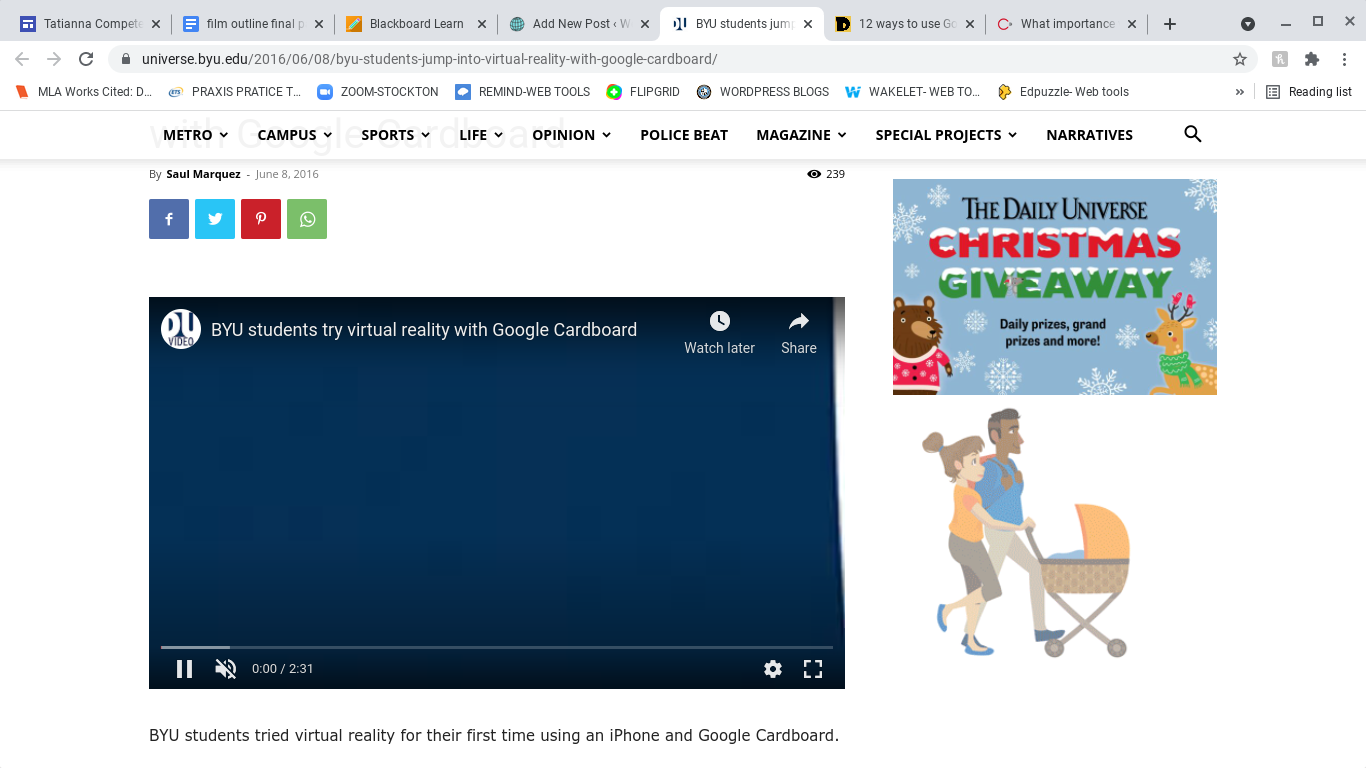
The last part of this discussion is to talk about how google cardboard can contribute to a successful global collaboration. According to the website, it states how “Virtual Reality creates an artificial environment with software. The artificial environment gets presented to the audiences in a way that encourages them to accept and believe it as a real environment. VR technology creates primary experience focusing on two senses, i.e., vision and sound.” One of the best traits that make google cardboard so successful is that students can go on virtual field trips around the world, and be able to see all these places just with their computer at home. The students do not actually have to go to these places physically. When it comes to global collaborations, as a teacher you can have your students interact with other students around the world by going on skype or zoom, and the students could even work on similar assignments together. A great assignment would be to create a google classroom and then have the students come up with a lesson plan on how to use and create google cardboard and then show other students around the world how to use this, and share that experience together.
Google Cardboard- Blog Post #10
By Tatianna Competello
For our blog post this week we had the choice of picking a learning tool that can be used for virtual reality in classrooms. The tool I decided to talk about is called Google Cardboard. You may be wondering what this app is and how it works. This is an app where you can try virtual reality right from your phone, using Google Cardboard. This virtual reality headset is built from basic cardboard or plastic that brings the viewer in a video or gives them a 360-degree view of an image. It makes the viewer feel like they are actually in that location when in reality they are in the comfort of their own home or classroom. You can view pictures, play games, and experience virtual reality through a VR viewer that you can buy or make at home. This is a great and fun lesson to teach your students especially if you are teaching virtually. I added a video below explaining what exactly Google Cardboard is and how to use it in class. I think this is an interesting video and explains everything you need to know about this app perfectly. You can click here to watch it.
The first step to using this learning tool is to go to your app store and download the app.

When it comes to teaching students of any age reality can always be a challenge. One of the biggest problems being you are not face to face with the students and this can be make learning difficult. I think any app that will allow students to learn something new and be creative is the best lesson a teacher can teach. With Google Cardboard students develop creative skills and be in charge of their own learning. With this app you can teach students how to use virtual reality technology can be used to engage students in topics related to geography, history, or literature by offering a deeply immersive sense of place and time. For example, you can take the students on a virtual field trip and how the students watch the trip the whole time through the google cardboard they created with their phone. I found a very detailed and interesting link that examples several ways how virtual reality with google cardboard can be used together in a classroom. This link truly shows you so many reasons why you should use this app for teaching and learning. You can click here to find it.

Now you may be wondering what are some specific ways the teachers and students can use this in the classroom. To start, you can take the students on virtual field trips. With this, students can choose a place they would like to go to, based on the current area they are in during the class time. The students could all go to the same place if they want or different places, that part does not really matter. The students can look at this location through their google cardboard and then share with the class what they learned from this lesson as well as what this site looked like through the cardboard.
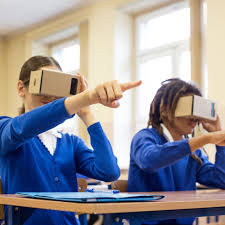
Another way the students can use this app in class is by watching 360- degree videos. There are hundreds of videos the students can watch and on almost any topic the students want to watch the videos on. Such as skydiving, sharks swimming or taking the children on a tour of a museum with history made in it. When it comes to teaching a specific lesson in class you can find a video of the topic you are teaching and have the students watch this video in class.

A very creative way students can use google cardboard in the classroom would be to let the students create their own projects or lesson plans. This can help students can a real idea of how to use this app and all the features that come with it. The best part about this assignment is that the students can make their own 3-D pictures and then share with the class their picture is and why they chose it. This also helps to improve students’ creativity skills. You can click here to see twelve fun ways the students can use this app in the class with specific details for each assignment.
You can watch this video below with students using Google Cardboard for the first time as well as their reactions. I thought this video fit perfectly for this assignment. You can click here to watch it.

The last part of this discussion is to talk about how google cardboard can contribute to a successful global collaboration. According to the website creware.asia it states how “Virtual Reality creates an artificial environment with software. The artificial environment gets presented to the audiences in a way that encourages them to accept and believe it as a real environment. VR technology creates primary experience focusing on two senses, i.e., vision and sound.” One of the best traits that make google cardboard so successful is that students can go on virtual field trips around the world, and be able to see all these places just with their computer at home. The students do not actually have to go to these places physically. When it comes to global collaborations, as a teacher you can have your students interact with other students around the world by going on skype or zoom, and the students could even work on similar assignemts together. A great assignment would be to create a google classroom and then have the students come up with a lesson plan on how to use and create google cardboard and then show other students around the world how to use this, and share that experience together.
Blog Post 10-Tatianna Competello
This week we are working on the topic Out of Eden Walk. This is a website with multiple chapters and it is actually very interesting. But some may wonder what is the Walk Of Eden? According to the website https://www.nationalgeographic.org/projects/out-of-eden-walk/, it states how this walk was completed by, Paul Salopek’s It was a 24,000-mile odyssey is a decade-long experiment in slow journalism. Moving at the beat of his footsteps, Paul is walking the pathways of the first humans who migrated out of Africa in the Stone Age and made the Earth ours. Along the way, he is covering the major stories of our time—from climate change to technological innovation, from mass migration to cultural survival—by giving voice to the people who inhabit them every day. His words, as well as his photographs, video, and audio, create a global record of human life at the start of a new millennium as told by villagers, nomads, traders, farmers, soldiers, and artists who rarely make the news. In this way, if we choose to slow down and observe carefully, we also can rediscover our world.

The first chapter I am covering is Chapter 3: Autumn Wars–
This chapter explains what happens when you become a war refugee. This leads you to walk everywhere. This chapter states how In southern Turkey, one of the oldest farmed landscapes, Salopek meanders through pistachio orchards, Bronze Age ruins, and walled medieval cities. And he walks into one of the greatest humanitarian catastrophes of our time: tides of refugees from Syria’s civil war. Turning northeast, he passes through tense Kurdish villages en route to the Caucasus Mountains and a frigid crossing into Georgia—an oasis of stability in a turbulent region. From the capital, Tbilisi, Salopek sprints through Azerbaijan to the shore of the Caspian Sea. Central Asia and the ancient Silk Roads beckon. I think it is really cool that we can take a virtual tour with every milestone Paul came across at the time and be able to see the whole view of the exact place he was in as well.
When I looked more into this chapter on the website I was able to see the destinations that were crossed during the time of this chapter. For this chapter, he begins his journey on June 25th, 2014. He was in Limassol, Cyprus. Paul explains what Cyprus was like in such words, “Smooth, flat asphalt, and not a soul on foot. “Such is the inward loneliness of Europe.” Then on July 16th in the same year, Paul crossed over to Mersin, Turkey. Paul strikes out across Anatolia with a professional tour guide and a recalcitrant 22-year-old mule. Now on July 31st, 2014 Paul hit his twentieth milestone. This was one day 532 of the journey and he hit 1,900 miles.

The next Milestone that was established in this chapter is Milestone 21: Cyprus. This was one day 548 and the mile reached was 2,000. This is an interesting piece of what Paul had to say about his time at Cyprus, “The iron ship docks with a clang. There are beaches slathered with baking Russians, baking Brits. Then a port city. Then a checkerboard of olive groves, of yellow hay fields. Empty chalk roads that burn out the eyeballs. Boarded up villas. (The global banking crisis hit hard.) Marooned villages. Old Byzantine churches. The racket of cicadas only ratchets up the heat. Carob trees throw lead-colored shadows. Up in the dry hills above Pyla, an Indian tractor driver points the way north to the Turkish enclave. Sitar music twangs from his earbuds. Another new arrival. He turns soil that has been plowed for 9,000 years yet still gives. It has always been this way in Cyprus.” You can click here for the article.

The next milestone that was discovered in this chapter is Milestone 22: Back and Forth. This goal was reached on the day of 532 and mile 2,100. This milestone aboard THE M/F Bozcaaada Ferry, at the Mediterranean Sea. The video I listed below takes you on a virtual tour with the sound of the sea, and at a beautiful time of the day. Although there is one more goal to this chapter I thought the three that I chose were the most interesting to me.
Chapter 2: Holy Lands-
This chapter took place from May 2013 until July 2014. In this chapter we see Paul go from the desert expanses of the Arabian Peninsula, the walk heads north into holy lands that seeded the three great monotheistic faiths. In this chapter, we read about Sami’s World. As stated in the article Sami Nawar is the director of Al Balad, Jeddah’s famous historic district. He’s a compact, friendly, indefatigable man with 1,001 plans, schemes, projects, ideas. “This is the only city on Earth with this claim,” Sami says.
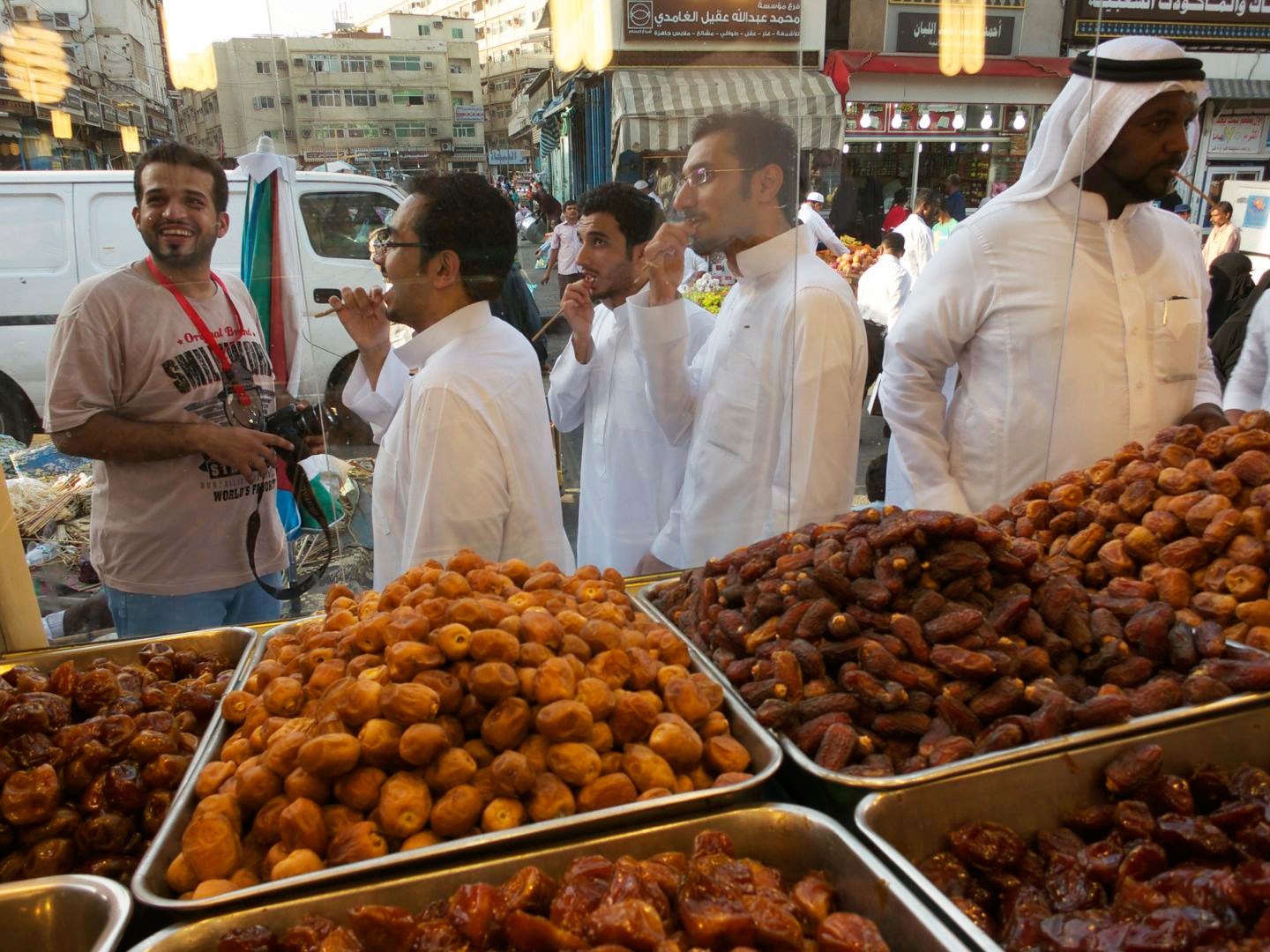
The author of this article wanted the audience to see that he came to Jeddah, Saudi Arabia looking for Eve’s grave. Paul did everything he could in his power to find this grave. There were many milestones and goals reached along the way. In the video below Sami gives the audience a quick rundown of why he is going on this journey and educates other people watching this video.
The last chapter I am covering is Chapter 5: Riverlands–
This chapter took place in Pakistan, India. The dates this chapter took place are February 2018 until October 2021. In this chapter we see Paul navigating a maze of waterways across fertile South Asia, the walk traverses an emerging center of global power. In this chapter, I deiced to cover the part about Gold Nomads of the Karakoram. Paul says Rivers in the glacial valleys of the Karakoram, the towering mountains of northern Pakistan, swirl ice cold and the color of slate. Along the banks of some of these remote waterways, patchwork tents huddle like flotsam. Inside the tents live nomad families who wander from current to current, panning the dark sands for glints of gold. These are the Stonewall.
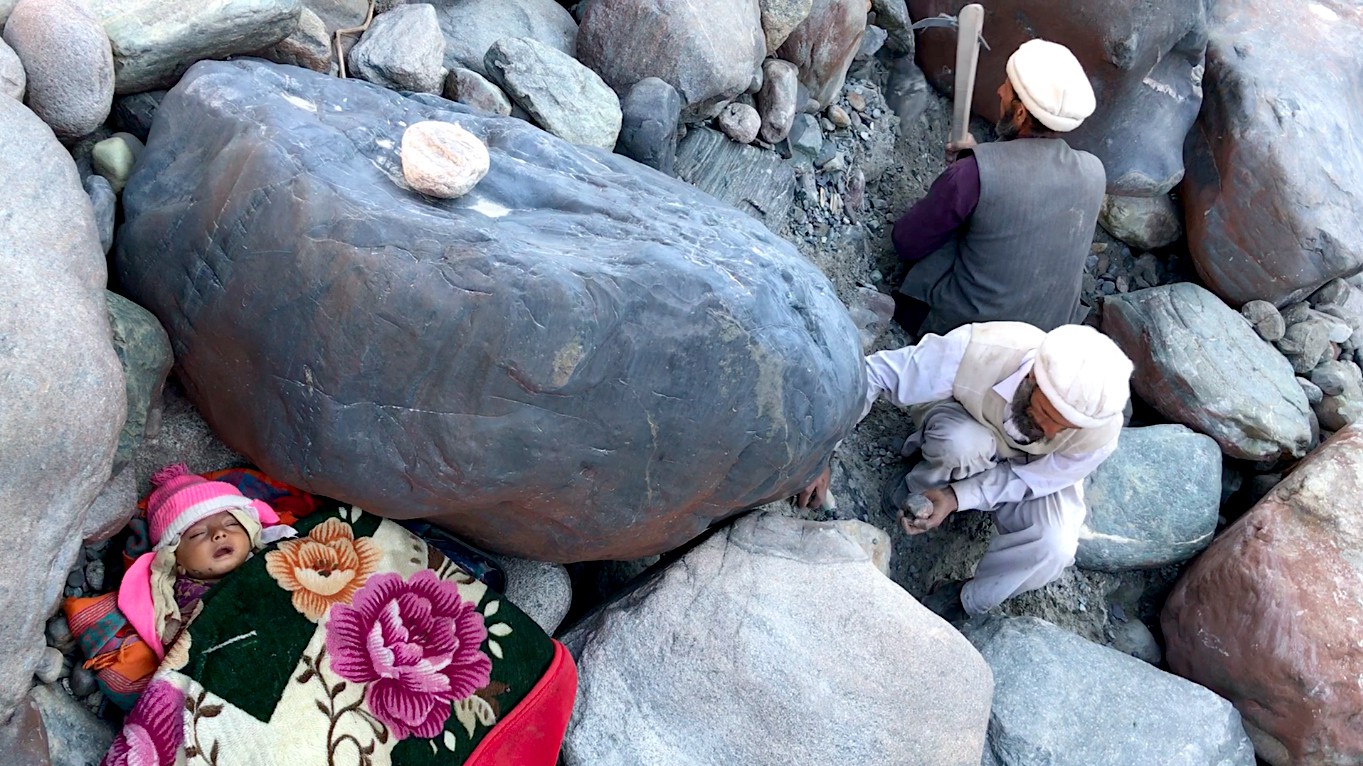
The video I embedded below shows the living conditions, Paul lived in for the time he was in Pakistan. Along with how the people from Pakistan lived every day. It is sad to see how some of the children live in these conditions. No evidence links the Sonewal to the Roma people, as Brown suggested. But they still roam as before. Few of the surrounding townspeople marry into their ranks. Their children remain mostly uneducated.
Blog Post 9- Tatianna Competello
This week for our blog post we are choosing a topic that we feel is most important to use in our classroom one day as future teachers. The area that I feel is most important in the classroom is “Well-Being Pillars”. This area can be found on page five of the educator’s guide. These rules focus on increasing the knowledge, skills, and positive human qualities that promote our wellbeing in the classroom. I think the reason why I like these well-being pillars is that they remind me of great classroom management rules along with areas that form a classroom. Students of all ages should be reminded and taught what every area means and how to use them in the classroom throughout the year of teaching. Below is a picture of what the well-being pillars are and what each area means.
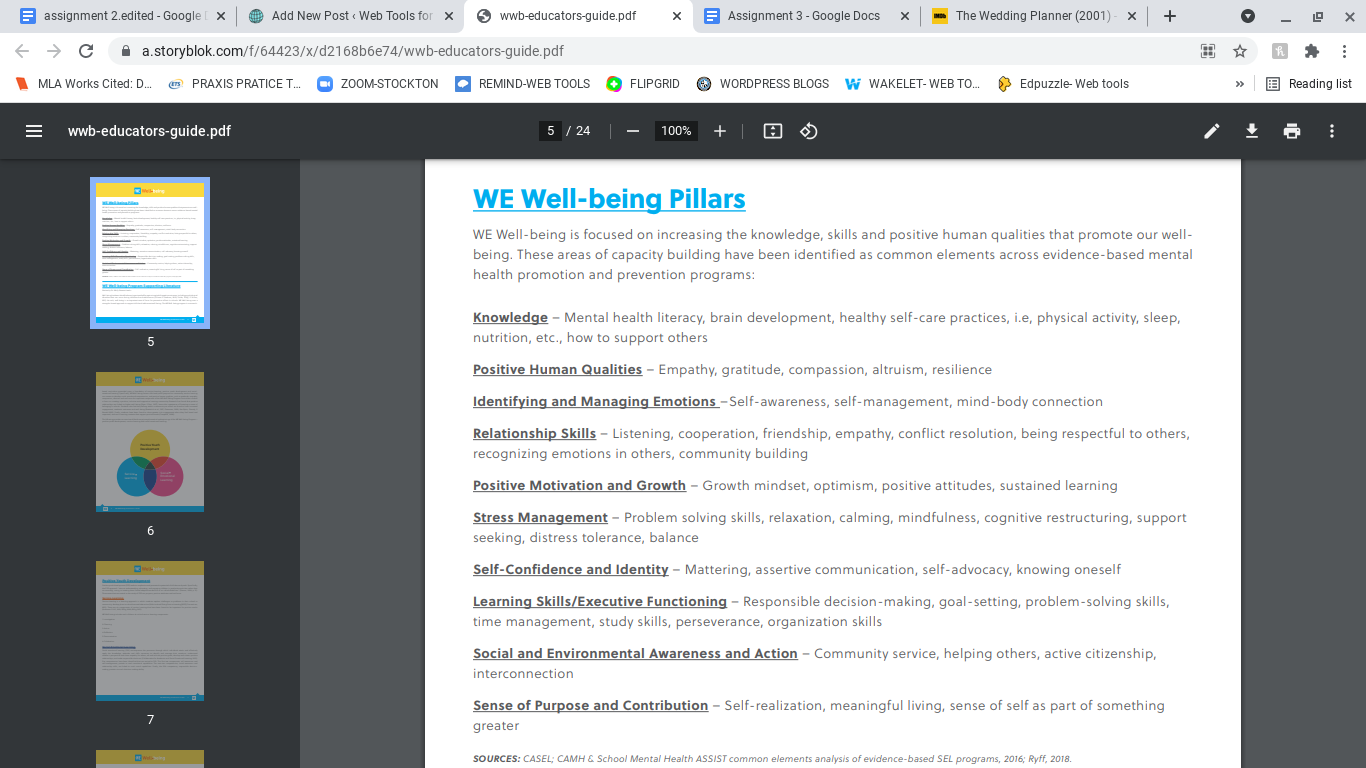
The first area listed in the photo is Knowledge. In my future classroom, I want all my students to have as much knowledge as possible when it comes to every lesson taught in the classroom. This is going to be the base of the classroom. A good way for the students to distribute knowledge is to complete worksheets and assignments based off of what we are learning in class. Another way for the students to show knowledge to each other in the classroom is to work together as partners for activities.
The second area listed is, Positive Human Qualities. A way to show this in a classroom as a teacher would be a role model for the students. This way the students have someone to look up to and follow their actions at all times. Most likely when a teacher goes about something in a positive way the students will follow that and for the most part, all the students will be nice and caring to each other, especially when needed.
The third area is Identifying and Managing Emotions. A great way I can show this in the classroom is to be patient with the students. Some days are going to be more difficult than others but it always helps to let the students know you are there for them and it is okay to show how they are feeling throughout the day. For example, every morning when the students come to class I can ask everyone how they are feeling today and what emotions they are feeling, and then go from there.
The fourth area is Relationship Skills. This plays a huge factor in the classroom. In order for the students to show this in the classroom, the teacher should work on listening skills with the students. This way the students can comprehend what they are learning or what tasks they need to follow. Another skill to play in this area is for the students to create friendships in the classroom, and be respectful to others at the same time. This way the students can get to know each other and actually like working with each other, along with creating friendships that will last outside the classroom. When it comes to relationship skills it is all about community building and just showing everyone around you that you could be a nice person.
The fifth area is Positive Motivation and Growth. When it comes to this area as a teacher it is very important to instill confidence into your students at all times. The students usually thrive off of positive energy in the classroom and especially when the students know they are on the right track. This gives the students the motivation they need to keep going.
The sixth area is Stress Management. We all know that throughout the day or even towards the end of the week the students can be really stressed and overwhelmed with all the information they have been learning. A good way for the students to destress before they become completely overwhelmed is to take one day a week off and let the students have a free day. For example, every Friday as a teacher you could set up corners in the classroom the students can play games and activities with each other to have a little fun, but the best part about it is that the games will be educational. But the students might not catch onto this since they are having fun with each other.
The seventh area is Self-Confidence and Identity. For this area, it is important to know for the students to know that they can make mistakes and it is okay to fail every once in a while. Although that might sound bad it is not. Sometimes the students need to learn from their mistakes. But as a teacher, you should be there for your student letting them know it is okay and they will still be able to succeed and learn. It is also okay to show your students that not everyone is perfect and even the teacher themselves will make mistakes.
The eighth area is Learning Skills/Executive Functioning. This area is important when it comes to making responsible decisions, goal settings, problem-solving skills, and time management. A great way to show this in the classroom would be to come up with a list of goals for the students to complete every week as a group and as an individual. This way the students can learn what it is like to set a goal and complete it, along with working with time management skills. This way the students can also learn what it is like to work with a deadline and the responsibilities that come with it. These are not only skills that students will use in the classroom but skills that are used in everyday life.
The ninth area is Social and Environmental Awareness and Action. This is an area that can be used in the classroom but mostly outside the classroom. This area teaches the students what it is like to help others when it comes to community service. A good way to show the students how to practice this skill would be to have the students participate in a local can drive through the school or donate to a food pantry.
The last area is Sense of Purpose and Contribution. In this area, the students explore who they are and build a strong sense of purpose. A good way to use this in the classroom would be to ask the students for feedback at all times and let the students know that they can have a voice and speak up in the classroom whenever they like. For example, the students should not be uncomfortable asking questions in the classroom if they do not understand a topic. This can help the students expand their knowledge.
Blog Post 8- Hyperdocs- Tatianna Competello
For this week’s blog post the topic we are covering is Hyperdocs. I found my Hyperdocs by using the hashtag #hyperdocs on Twitter. The first article that came up for me was the article that sounded the most interesting to me. The HyperDocs I am using is from a lady named, Theresa Carter. Theresa and another lady named Tegan wrote a post on “How HyperDocs Transform Instructional Experiences.”
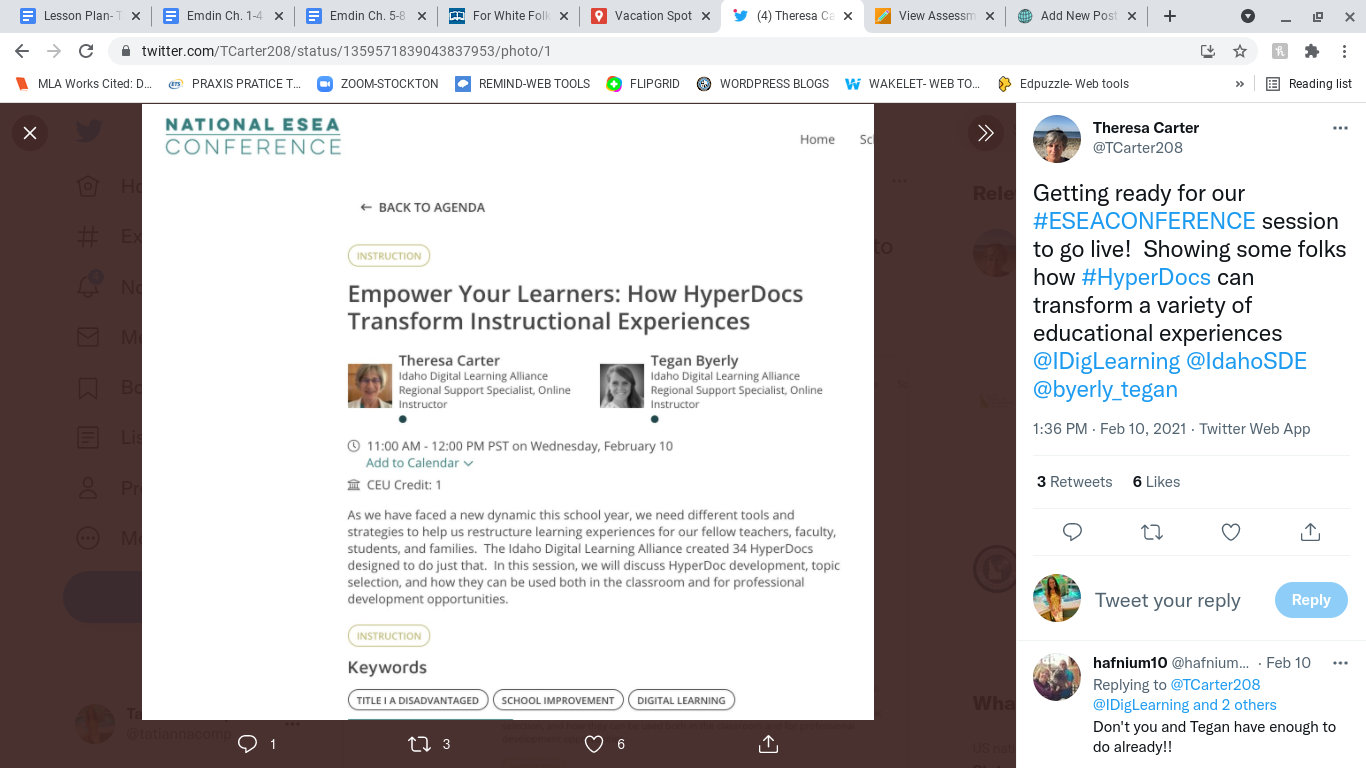
The HyperDoc I choose is based on an interesting topic. This topic is based on how we need new teaching tools with the way education is presented now. Since COVID-19 teachers having to deliver education to students has been a tough challenge. Theresa talks about in the article how we need teaching tools that can mainly be used online since that is where most of the student’s education comes from now. What I liked the most about this topic is that these new learning tools are not just for the teachers, but it is for the student’s benefit as well as the student’s family’s benefits. This was everyone can be hands-on and can be involved in what is being taught in the classroom every day. One of the best tools that can be used to teach online is, HyperDocs. When it comes to hyper docs the teachers and students can create any topic they would like and put information about the topic in each slide. I think this is an amazing tool to use, especially for the students that choose to stay learning online. This tool reminds me of Google Docs and Powerpoint all in one. It is a creative way to keep the teaching alive in the classroom. With this app, multiple people can view what you are doing at the same time. This is a great way to introduce a new lesson to the class with lots of information, examples, and pictures. In my opinion, this is a tool every teacher should consider using in the classroom, and teach their students how to use it as well.
Blog Post 7-Tatianna Competello
The virtual field trip I decided to go on for this assignment is, a “Walk At Dawn crossing the Rovira cove from South to North.” This island is located in Catalonia, Spain. I have to say this video caught my interest right away because I love walking on the beach at night in the summer or being on vacation on an island. This video took me back to when I went on vacation in Saint Martin and I just loved everything about it. This video was so pretty and peaceful to watch. The whole video is based on taking a walk from one side of the island to the other. There is a 360-degree view of the video so it almost makes you feel like you are there in person. At the beginning of the video, it gives you a whole view of the beach from people’s houses. I have to say the houses that are shown in the video are huge and have such an amazing view to look at every day. It looks like there are condos or resorts on this beach as well for people who want to vacation there. The water in the video is so clear and blue, you can hear the waves crashing throughout the whole video and it is a great sound hearing the waves crash on the sand. I love how this video takes place at dawn therefore you have such a pretty sunset to watch throughout the video. You can slowly see the sun start to go down for the day and change colors. I love how the sun reflects on the water and makes the water look even prettier. Everything about the video is truly so relaxing and peaceful. As we know the video takes you from the north end of Rovira Cove to the south end and every minute of the video gets better and better. Towards the end of the video, it takes you away from the water and shows the audience these huge rocks with trees on top of them, and in the middle of these rocks, there is a path to get into the water. But to the way left of these rocks, it looks like there is a staircase that may lead up to the people’s homes or to a secret spot. These rocks almost look like mini mountains, and like I said in between these two rocks is a path that leads back out to the ocean, but it is the perfect path to lead out too. From what it looks like you can sit on top of these rocks when you get out of the water and just enjoy the view or relax. Then when we get to the very end of walking down the rock we have another 360-degree view of the island but from the other side this time, and it is just a beautiful view. In my opinion, the view is just breathtaking. Overall, I loved watching this video and I am glad I found it.
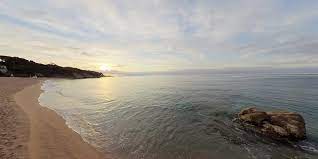
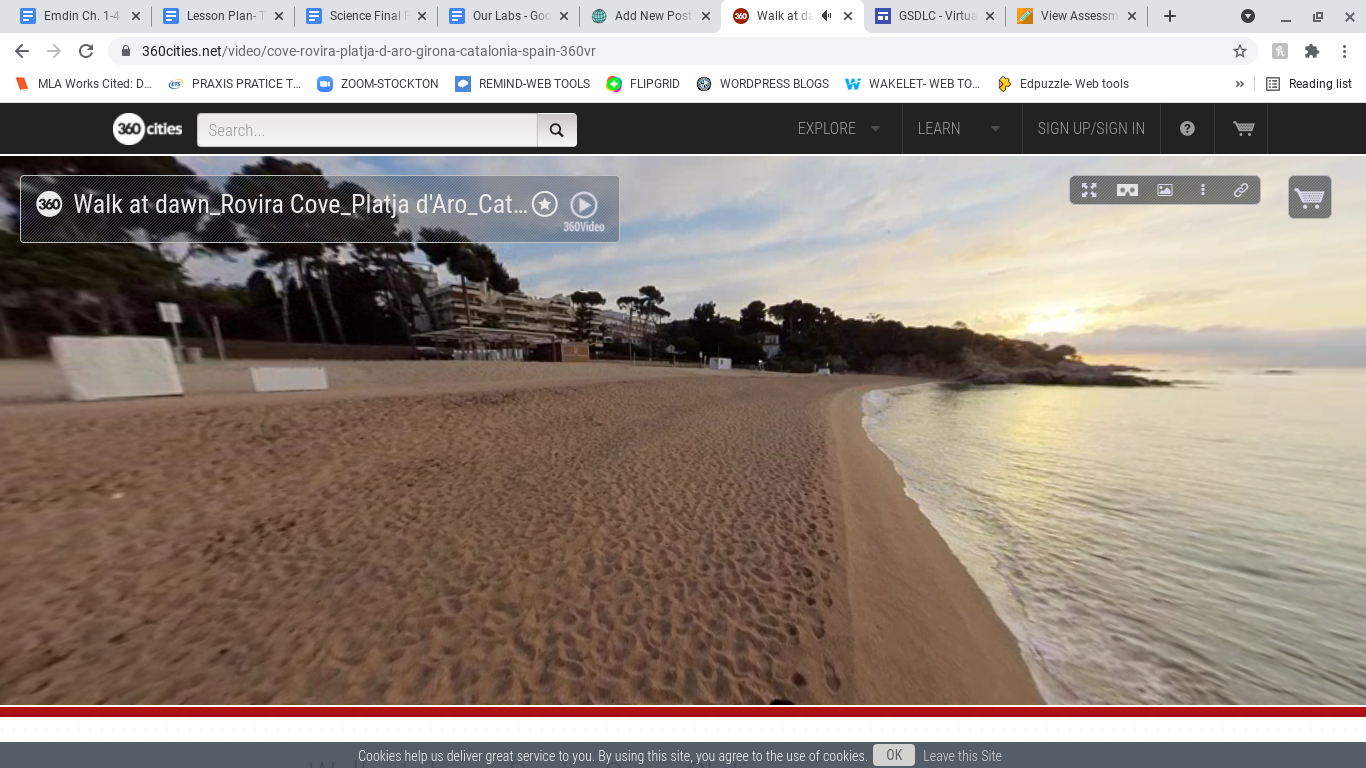

Blog Post 6- Subtitles- Tatianna Competello
This week for our assignment I found this show on youtube which is, SKY COURT. This show is the first episode of season one. The first episode is based on how Nikita Lazarev makes an offer to the woman he loves, but Veronika was widowed only two years ago. However, Nikita won’t get to hear the answer, because coming out of Veronica’s apartment, he will die, accidentally collapsing into the sewer. He arrives in the heavenly court, where everything is alike on earth: judges, prosecutors, and lawyers. Every human is judged on their first and last act.
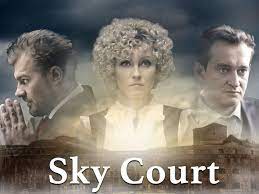
In this show, I noticed several things about the cultural aspect and the setting. To start, the Lawyers in the show, Andrei and Veniamin are friends who have much in common, but their work often puts them on different sides of the fence. In the episode, I watched a man named Nikita ask the women he loved to marry him, but Nikita never got to hear what his lover Veronika had for an answer because as soon as Nikita came out of her apartment that day, he was killed. The show starts off with everyone being in court just like we do here in America. This court session is about figuring out how Nikita died and possibly the people involved in his death. This show is based on Russian culture. I have noticed in this show in the courtroom there are beautiful paintings and furniture pieces in the background. Another cultural aspect that can be seen throughout the show is how the Russian cultural deals with death with people from their culture. During this court meeting, everyone gets together and decides where to send the soul of a person after death. When someone passes away in the Russian culture people who knew the person that passed away and gather an idea of where this person’s soul will go after their death. I am a Catholic Italian and in my culture when someone passes away we know that their soul went to heaven and we do not have to decide on a place where the person’s soul will rest. Instead of having a court meeting, we have a Funeral and a Wake to say our last goodbye and show respect one more time for the person that passes away. But in the Russian culture, they do things a little differently. Another cultural aspect I saw in this episode is that every human is judged on their first and last act. This means that the first and last act this person had before they pass away has a big determination in where their soul will go as well. In the show I noticed that all the man and women were always dressed very nice and professional. The women always had on appropriate outfits with their hair and makeup done, along with the men always being dressed in suits. I also noticed the court that was shown in the show was beautiful and done up so nice.
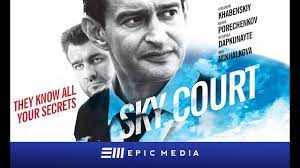
In this episode, I found some aspects that were similar and different to my culture, which is being Italian. To start something I found similar for both cultures is that we both take people’s deaths to court that could have possibly been done on purpose or a crime committed in order to kill the person. In both cultures, we just want to get down to the bottom line on why that person passed away and put the person in jail, and give them a consequence for being responsible for someone passing away. In this episode we see this activity happening at the beginning of the show. Another similarity I found is that friends in the episode get together and go out to eat or grab a drink with each other. The two lawyers were having a discussion about the death of Nikita. In America people like to get together with friends and go out to eat for multiple reasons. Based on what I watched from this show most people just traveled on foot and if not then then people had cars, and motorcycles. In the episode the type of food that was eaten is food from the Rusian culture. The meals that were served in the show was not named but I saw that people were always drinking tea in the show. In my culture we are not big on drinking tea, instead we like to drink coffee throughout the day, usuakky with cream and sugar in it. The first activity I saw that people did for fun was play Paintball games in person. Another activity I saw that people did for fun was go on waverunners and jetskies in the lake. I have to say my family and I own wavrunners and we use them mainly in the summer, they are so much fun to use! I also saw people went to the beach for fun as well. The weather for the most part always looked sunny and hot. For the most part in this show I did not see people having that much fun, for the most part people were just worried about figuring out the death and getting closure. I have to say this game is popular for people in America as well and could be a fun game. Another similarity I saw in the video is that when Nikita passed away in the show his girlfriend was very upset and grieving, but she had a friend by her side to comfort her. Another similarity I noticed is that usually the men smoke cigarettes often. People are always smoking in court and outside of court. I have realized that this takes the stress off of people. This is definitely similar to my culture people like to smoke as well constantly and usually smoke in areas they can such as casions. I would say the characters value love, friendship, and religion. Russians highly value stability and security. I can see this based on the eposide. I can tell in this video that Nikita was very cared for and people want to get to the bottom of what caused his death. Some paintings that I saw in the show were murals of people who were famous, or paintings of people that others knew personally.

Overall, I am glad I came across this TV show. I would say it is a drama film along with love being involved.
Blog Post 5- Tatianna Competello
This week for our blog posts we are writing about something we learned in our Pursuell textbooks, based on chapter two which is “Communicators.” In this chapter, I learned about new technology tools I never heard of before. To start, I learned what the tool Immersive Readers are. This is a free tool that implements proven techniques to improve reading and writing for people, regardless of their age or ability. Immersive Reader can improve reading comprehension and increase fluency for English language learners. It can help build confidence for emerging readers learning to read at higher levels and offer text decoding solutions for students with learning differences such as dyslexia. With this tool, you have the ability to click on each word individually and be able to hear the word out loud. That is one of the best features of this app, it is called the Read Aloud. You can highlight the words as you are reading as well, to save what you have read and go back to it later. There have been studies showing that people’s fluency and comprehension skills have been extremely improved, especially when it comes to the readers paying attention and be able to focus the whole time on what they are reading. I never knew this tool was available to use and made by Microsoft. The Microsoft Immersive Reader is a free tool, built into Word, OneNote, Outlook, Office Lens, Microsoft Teams, Forms, Flipgrid, Minecraft Education Edition, and the Edge browser. These are apps that I use daily with being a college student, and now I know I can use this app with any one of these tools. This is great to know. This is also a great tool especially if English is your second language. This tool is also a great way if you have a hard time comprehending what you are reading and writing. I know for myself when I hear out loud what I am learning, and reading about it helps me remember what I am learning about, this way I just do not hear it in my head. According to our textbook, it states that “Microsoft’s mission statement is, “empower every person and organization on the planet to achieve more.” I think this is an amazing goal to have and it is so nice to see that people can have free tools provided at their fingertips in order to succeed. The best feature

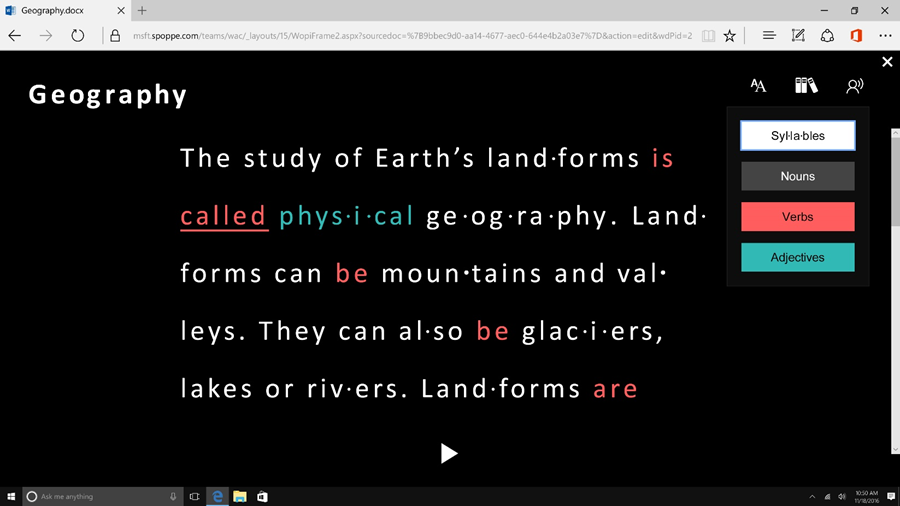
Blog Post 3-Tatianna Competello
For this assignment this week I decided to use the grades Kindergarten through eighth grade. When I clicked on the link I could not believe how many tools there were for these students to use. It really is amazing to see how many educational tools there are out there to use. The tool that interested me the most is International Children’s Digital Library. This caught my attention right away because this library provides free books for children to learn and explore different cultures, languages, subjects, ideas, etc. The fact that this learning tool is free is the best part of it. There really are no excuses why students can not take the time out to learn about different subjects and backgrounds when it is free at their fingertips. Students can explore different races in the world and get a better understanding of them. I think the whole tool itself is useful and can be used in multiple ways. This tool is an important resource for education. This tool was made to help all these free online books continue to educate children in their native languages. This gives children a better understanding of the different cultures in this world. Not only can children learn about other cultures, and races, they can dig deeper into their own culture and learn more information they did not know already. Another point I found useful with this tool is students can access this digital library whenever they please. For example, if a student is completing an assignment in class, and then has to finish it at home, the students can log back into this book and pick up where they left off, or the students can search keywords in the area they are working onto find the exact book they need to complete the assignment. There are a few ways I would use this tool in my classroom. To start, I would pick two days out of the week for students to take about ten minutes of free time to go through this tool and explore a subject or area that interests them the most. Then students could write a sentence or two on what interests them the most, or what the article was about. Another way I would use this tool in my classroom is by having students complete assignments with this tool. For example, I would create questions that students can answer for certain books, and then the students would have to go through the books and read until they find the answer. This is the main way I would this tool in my classroom. I think it is a great idea for students to use and get to know this tool very well. By using this tool to complete assignments students can expand their knowledge in so many areas. The last way I would use this tool in my classroom is by having students complete blog posts just like we do.

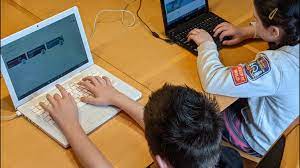
Blog Post 2- Collaboration- Tatianna Competello
This week we are writing a blog post on the topic of Collaboration. My understanding of the word collaboration is, a place of work where people come, and work together for the same reason or goal that they are working towards to benefit a purpose. In other words, this is when a place of business or a school wants to come together and work on a project that will benefit everyone around them. As always there are several skills that are needed when collaborating. The most important skill for this task is to make sure everyone is on the same page. The best way to do this is to gather some ideas about the topic you are working on and make sure everyone agrees with what is being said.
A few examples of collaboration would be working on shared documents, video calls, working on a community project, etc. Collaboration can be used in many ways such as in school. For example, teachers and parents can work together to help support their student’s learning in better ways. The teachers can create group chats for the students’ parents on apps such as Microsoft Education and this way the teachers can communicate with the parents and see what the best way for their children to learn is. This is also a great idea of collaboration because the teachers can keep the parents updated at all times. I think it’s a great idea for the parents to feel wanted and involved at all times. I am taking two classes this semester that include collaboration. Every week in my group I am assigned a few questions I have to answer with my group members and then post our answers in a group discussion for everyone else to see. We pick a day and a time every week to meet on Zoom as well, that way we can speak to each other face to face. After we post our answers, we can interact with people from other groups and see if they have the same ideas we do. This is a great way to explore new ideas and look at the topic from different perspectives.
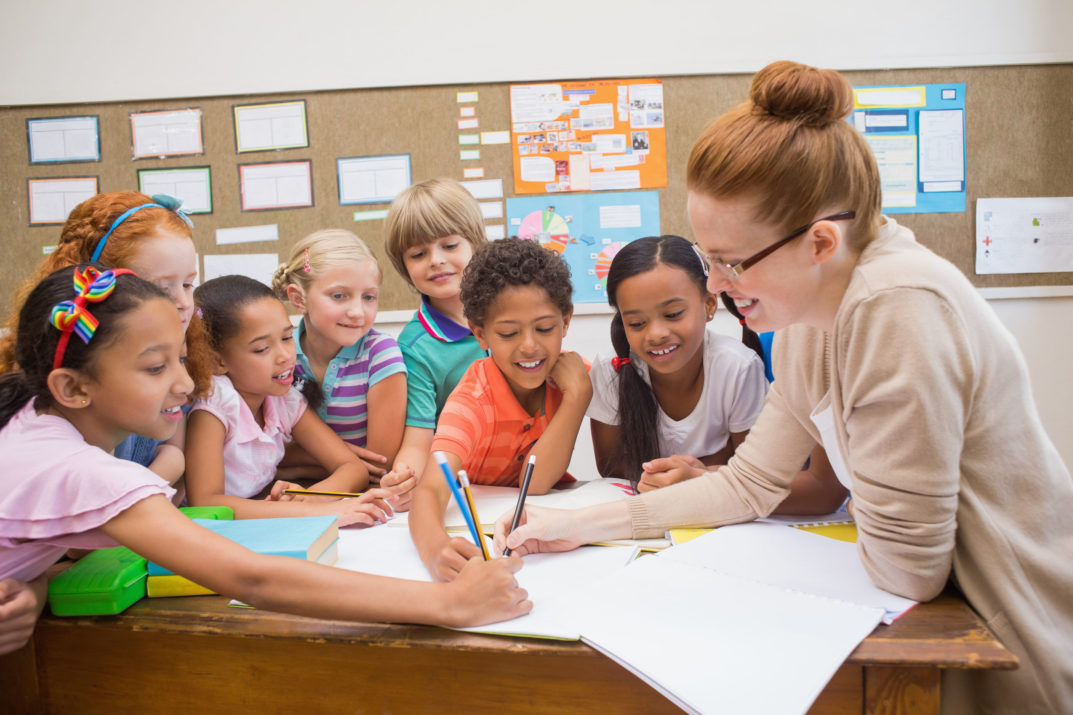
Recent Comments